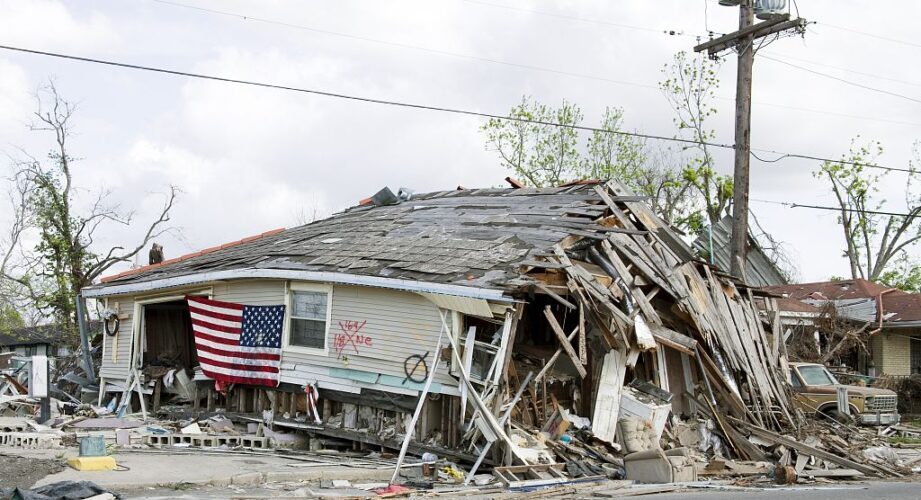Mother Nature is a formidable force that never fails to impress. Storms can be difficult to forecast, so don’t underestimate the importance of being prepared and always working on your home’s maintenance. When it comes to natural catastrophes, hurricanes, increasing rainfall, and wind speeds are usually associated with an increased risk of property destruction.
In fact, in the period between 2011 and 2020, a total of 19 hurricanes hit the US, leaving millions of people with damaged houses. When a hurricane strikes residential properties, the damage may be devastating.
Many storms last long, destroying houses and whole villages. Others emerge momentarily and then vanish, causing far less damage. However, regardless of their magnitude, hurricanes leave people with enough damage to rebuild their homes.
With their powerful winds and torrential rainfall, they cause unprecedented devastation in their path. The damage such a disaster can cause can be emotionally and financially draining for homeowners. However, recognizing the most common forms of damage can help in preparedness and timely post-storm response.
This article shows the extensive consequences of this natural disaster and provides insights into potential recovery pathways.
Table of Contents
Roof damage
The roof, being the most exposed section of a property, can take a hit during a hurricane. High-speed winds can tear shingles, tiles, and even the underlying structure. Aside from direct wind damage, flying debris may penetrate or dent the roofing material.
Water flow from damaged roofs can cause a cascade of additional issues, such as mold development and structural damage. That’s why roof damage should be fixed as soon as possible to avoid further damage to your home’s interior.
However, hurricane recovery may be a difficult endeavor. Homeowners frequently feel overwhelmed, wondering how to handle the complex process of evaluations, repairs, and insurance claims. That is why you need professionals such as public adjusters to guide you along the way.
They provide services that can help property owners navigate the complex maze of damage evaluations and claim processes. They will review your insurance policy, explain the terminology, fill out all forms and paperwork, and submit the necessary property claims so you can get the fair payment you deserve to fix your home.
Window and door breakage
Even after putting enough protection, hurricanes can cause shattered windows and doors. After a hurricane, smashed windows and doors expose homes to the outside elements. Water and wind may easily enter your property, causing further damage. Even the strongest glass can be shattered by the severe pressure differentials, and flying debris can also add to the risk.
Broken windows and doors can cause more rainfall to enter houses, worsening the damage. So, hiring a cleanup company after a disaster is essential because they’re familiar with such situations and know exactly where to address issues.
Flood damage
Flooding damage is a frequent issue during a hurricane, particularly if a property has suffered external damage. Structural flaws allow water to enter your house, inflicting immediate and long-term harm to your property and valuables. Water damage of any kind can lead to a variety of problems, such as mold growing under walls, attic insulation, and carpet and flooring. It can ruin the electrical systems in the home, sometimes requiring total replacement.

Also, because of the polluted nature of flood waters, your house may become infested with germs, pathogens, and other extremely harmful chemical and biological hazards. This can potentially jeopardize the stability of your house by weakening and decaying essential structural components.
Image source: The Journalist’s Resource
Equipment damage
Property damage of any kind may affect a wide range of devices, including power surges caused by storms. Hot-water boilers, transformers, air-conditioning systems, computer equipment, telephone systems, and other household appliances might be destroyed.
Businesses may suffer damage to equipment such as fire-pressured containers, sterilizers, vulcanizers, electrical equipment, and electronic data processing equipment.
However, most people believe that equipment destroyed in a storm would be immediately insured, but this is not always the case.
For equipment to be covered, policyholders must demonstrate the degree of their damage. This includes visual evidence demonstrating the amount of the damage, as well as analysis from third-party professionals, such as an HVAC technician, confirming the damage and the necessity of fixing it immediately.
Final thoughts
Gaining knowledge about the various forms of property damage caused by hurricanes is the initial step toward achieving long-term restoration. Although the aftermath may appear daunting, homeowners can reconstruct and revitalize their homes to their previous splendor by seeking suitable professional guidance and taking prompt action.
To reduce possible losses and guarantee a faster recovery path, it is critical to be proactive in both pre-hurricane planning and post-storm reaction. Be smart, work with the right people, and soon you will enjoy your dream house once again.





